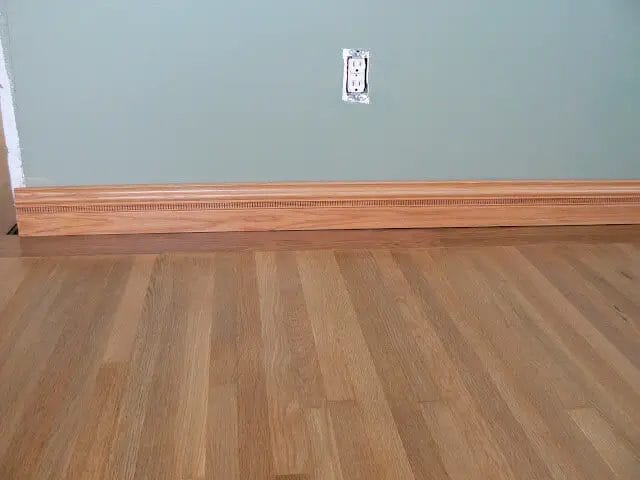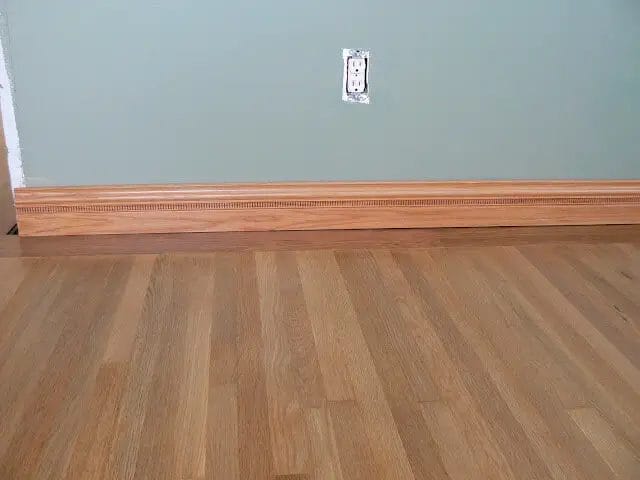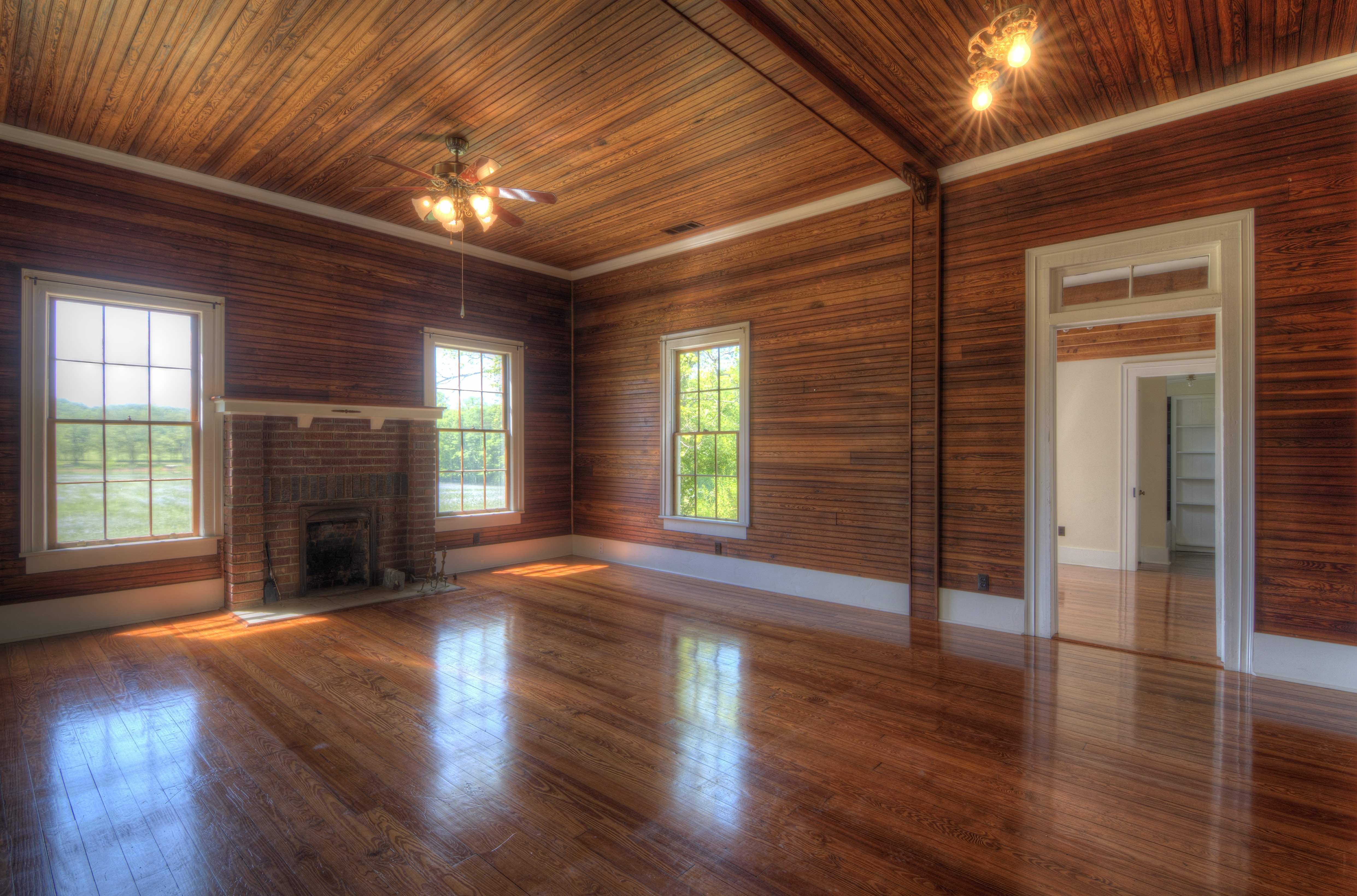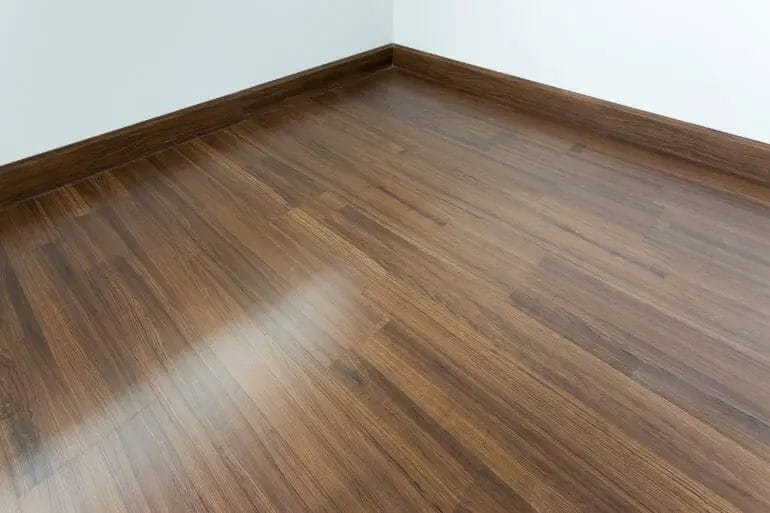Are you wondering if wood floors should match the trim in your home? It’s a common question for homeowners and designers alike. While there’s no hard and fast rule, many experts suggest that coordinating the color and tone of your wood floors with the trim can create a cohesive and visually pleasing look.
Matching wood floors and trim can help create a sense of harmony and continuity in your space. When the colors and tones of the wood complement each other, it can elevate the overall aesthetic of your home.

However, it’s important to consider the style and design of your space when deciding whether to match the wood floors and trim. In some cases, a contrasting trim can add visual interest and serve as a focal point in the room.
Ultimately, the decision to match or contrast wood floors and trim depends on your personal preference and the desired look you want to achieve in your home. Remember to consider factors such as the existing decor, natural lighting, and the overall style of your space when making this decision.

Harmonizing Wood Floors and Trim: Tips for a Cohesive Look
When it comes to interior design, one of the most important aspects to consider is how to create a cohesive look throughout your space. One way to achieve this is by harmonizing your wood floors and trim. By choosing the right colors, finishes, and styles, you can ensure that these two elements complement each other and create a seamless flow. In this section, we will provide you with some valuable tips to help you achieve a harmonious look between your wood floors and trim.
1. Consider the Color Palette
One of the first things to consider when harmonizing wood floors and trim is the color palette. It’s essential to choose colors that work well together and create a unified look. If your wood floors have warm undertones, opt for trim in a similar color family. For instance, if your floors have reddish hues, consider using trim with warm brown or cherry tones. On the other hand, if your floors have cooler tones, such as gray or ash, choose trim with grayish or cool undertones.
2. Match or Contrast?
When it comes to harmonizing wood floors and trim, you have two choices: matching or contrasting. Matching means selecting trim that is the same color as your wood floors. This creates a seamless and cohesive look. On the other hand, contrasting allows you to create visual interest and add depth to your space. For example, if you have light wood floors, you can opt for dark trim to create a striking contrast. Consider the overall style and ambiance you want to achieve when deciding whether to match or contrast your wood floors and trim.
3. Consistency in Finish
Another essential factor in achieving a cohesive look is to ensure consistency in the finish. Both your wood floors and trim should have a similar sheen to create a unified appearance. If your floors have a glossy finish, choose trim with a similar level of shine. Likewise, if your floors have a matte or satin finish, opt for trim with a similar texture. Consistency in finish will help tie the two elements together and create a visually pleasing result.
4. Balance with Wall Color
While harmonizing wood floors and trim is crucial, it’s also essential to take into account your wall color. Your walls act as a backdrop and can significantly impact the overall look and feel of the space. To create a balanced and cohesive look, consider the wall color in relation to your wood floors and trim. If you have dark wood floors and trim, lighter wall colors can help create contrast and prevent the space from feeling too heavy. Conversely, if you have light wood floors and trim, consider warmer or richer wall colors to create depth and coziness.
5. Pay Attention to Texture
Texture can play a significant role in harmonizing wood floors and trim. If you have textured wood floors, consider using trim with similar texture or grain patterns. This will create a unified look and ensure that the two elements complement each other. Additionally, you can also introduce other textures, such as rugs or curtains, that work well with both the floors and trim, further enhancing the overall cohesion of the space.
6. Seek Professional Advice
If you’re unsure about how to harmonize your wood floors and trim, don’t hesitate to seek professional advice. Interior designers or flooring specialists can provide valuable insights and help you choose the right colors, finishes, and styles to achieve the desired look. They have expertise in creating cohesive spaces and can guide you through the selection process.
In summary, harmonizing wood floors and trim is essential for creating a cohesive and visually appealing interior space. By considering the color palette, matching or contrasting, maintaining consistency in finish, balancing with wall color, paying attention to texture, and seeking professional advice, you can achieve a harmonious look that ties together the wood floors and trim seamlessly.

Contrasting Wood Floors and Trim: Creating an Eye-catching Design
When it comes to interior design, the combination of wood floors and trim can have a significant impact on the overall aesthetic of a space. By contrasting these elements, you can create a visually appealing and eye-catching design that adds depth and character to any room. In this section, we will explore different ways to achieve this stunning effect.
1. Color Contrast
One of the most effective ways to create contrast between wood floors and trim is through color. Choosing different wood tones for the flooring and trim can instantly bring visual interest to a room. For example, pairing dark walnut floors with light oak trim will create a striking contrast that draws attention to both elements. Consider the existing color scheme of the room and select wood tones that complement each other while still providing a noticeable contrast.
2. Texture Variation
In addition to color, texture variation can also play a significant role in creating contrast between wood floors and trim. Mixing smooth flooring with textured or distressed trim can add dimension and create a more dynamic look. For example, pairing sleek, polished hardwood floors with rough-hewn, reclaimed wood trim can create a visually intriguing design that balances sophistication with rustic charm.
3. Size and Scale
An often overlooked aspect of creating contrast is the size and scale of the wood elements. By using larger planks for the flooring and narrower trim, or vice versa, you can create a subtle contrast that adds visual interest without being overpowering. This approach works particularly well in smaller spaces, where a bold contrast may feel overwhelming. Experiment with different sizes and proportions to find the perfect balance for your design.
4. Architectural Detailing
Another way to create an eye-catching contrast is through architectural detailing. Incorporating intricate patterns or moldings into the trim can add visual interest and create a sense of luxury. This can be especially effective when paired with simpler, more minimalist wood flooring. The combination of ornate trim and sleek floors creates a captivating juxtaposition that instantly elevates the overall design.
5. Light and Dark
Creating contrast between wood floors and trim doesn’t always have to involve different wood tones. Using a combination of light and dark stains on the same type of wood can achieve a similar effect. For example, pairing light maple floors with dark-stained maple trim can create a sophisticated and modern look. The play of light and dark adds depth to the design while maintaining a cohesive and harmonious feel.
6. Statement Pieces
If you’re looking to make a bold statement with your wood floors and trim, consider incorporating a standout piece or feature. This could be a unique inlay pattern on the flooring or an intricately carved trim piece. By selecting one element to be the focal point of the design, you can create a striking contrast that immediately captures attention and becomes a conversation starter.
Summary
Contrasting wood floors and trim is a powerful design technique that can transform any space into a visually captivating masterpiece. By considering elements such as color, texture, size, architectural detailing, light and dark contrasts, and statement pieces, you can create an eye-catching design that will leave a lasting impression. Remember, the key is to find the right balance between contrasting elements to create a harmonious and visually stunning interior.

Mixing Wood Types: How to Combine Different Woods for Floors and Trim
Choosing the right wood for your home’s flooring and trim can make a significant impact on the overall aesthetic and ambiance. However, using just one type of wood throughout your space can result in a monotonous and uninspiring design. To add depth and visual interest, it’s important to consider mixing different wood types for your floors and trim. In this section, we will explore the art of combining different woods to create a cohesive and harmonious look.
1. Understanding Wood Species
Before diving into the process of mixing wood types, it’s crucial to understand the characteristics and properties of different wood species. Each wood species has its unique grain pattern, color, hardness, and durability. Some common hardwood species include oak, maple, cherry, walnut, and mahogany, while popular softwoods include pine and cedar.
2. Consider the Room’s Style and Function
When choosing wood types for your floors and trim, it’s essential to consider the style and function of the room. For example, if you have a traditional or classic-themed room, you may want to opt for warmer wood tones like oak or cherry. On the other hand, if you have a contemporary or modern space, lighter woods such as maple or birch can create a sleek and minimalist look.
3. Creating Contrast
One of the key elements in successfully mixing wood types is creating a contrast. By using woods with different colors, grains, or textures, you can achieve a visually appealing contrast that adds depth to your space. For instance, if you have dark wood floors, consider pairing them with lighter-toned trim or vice versa. This contrast will create an eye-catching focal point and prevent the different woods from blending together.
4. Establishing Continuity
While contrast is important, it’s equally crucial to establish continuity when mixing wood types. To create a cohesive look, select woods that have some common elements. This could be similar grain patterns, color undertones, or overall style. By finding common ground between the different wood types, you can ensure that they complement each other and create a harmonious design.
5. Balancing Proportions
When combining various woods, it’s important to consider the proportions of each wood type. Aim for a balanced distribution throughout the space. For example, if you have a large room with hardwood floors, consider using a lighter wood for the trim to prevent the space from feeling heavy or overwhelming. Similarly, if you have a smaller room, using a darker wood for the floors can help create the illusion of depth.
6. Test Samples
Before making a final decision, it’s always a good idea to test samples of the different wood types together in the actual space. This will allow you to see how the woods interact with each other under the room’s lighting conditions. It’s also an opportunity to assess how the colors, grains, and textures complement the existing elements in the room, such as furniture and wall colors.
7. Seek Professional Advice
If you’re unsure about how to effectively mix wood types for your floors and trim, don’t hesitate to seek professional advice. Interior designers, architects, or flooring specialists can provide valuable insights and recommendations based on their expertise and experience. They can help you select the right combination of wood types that align with your design vision while considering practical factors such as durability and maintenance.
8. Maintenance and Care
Once you have successfully mixed different wood types for your floors and trim, it’s important to establish a regular maintenance routine to keep them looking their best. Different wood species may require specific care instructions, such as the use of certain cleaning products or refinishing techniques. Follow the manufacturer’s recommendations and seek professional advice if needed to ensure the longevity and beauty of your mixed wood surfaces.
Summary
In summary, mixing different wood types for your floors and trim can elevate the design of your space by adding depth and visual interest. By understanding the characteristics of different wood species, considering the room’s style and function, creating contrast, establishing continuity, balancing proportions, testing samples, and seeking professional advice, you can successfully combine different wood types for a cohesive and harmonious look. Remember to also prioritize maintenance and care to preserve the beauty of your mixed wood surfaces for years to come.
Maintaining Consistency: Coordinating Wood Floors and Trim Throughout Your Home
When it comes to home design, one of the key elements that can tie a space together is the coordination of wood floors and trim. Having a consistent color and style throughout your home can create a cohesive and visually appealing look. In this section, we will explore some tips and considerations for maintaining consistency in your home’s wood floors and trim.
1. Choose a Unifying Color Palette
Before embarking on any wood flooring or trim project, it’s important to establish a unifying color palette for your home. This will help guide your decisions and ensure that all the elements work together seamlessly. Consider the overall aesthetic you want to achieve, whether it’s modern, rustic, or traditional, and choose a color palette that complements that style. For example, if you prefer a warm and inviting atmosphere, opt for rich, earthy tones like mahogany or cherry.
2. Match or Coordinate Wood Species
When selecting your wood flooring and trim, it’s essential to consider the wood species you choose. Matching or coordinating the wood species can create a harmonious and consistent look throughout your home. If you already have existing wood trim, try to find a flooring option that closely matches or complements it. If you’re starting from scratch, consider choosing a versatile wood species that can be used for both flooring and trim.
3. Consistency in Finish
In addition to considering the color and species of the wood, it’s important to maintain consistency in the finish. Whether you prefer a glossy or matte finish, make sure to apply the same finish to both the flooring and trim. This will help achieve a cohesive look and prevent any jarring contrast between the two elements.
4. Consider Room Transitions
Another factor to keep in mind is how the wood floors and trim transition between rooms. If you have an open floor plan, it’s crucial to ensure a seamless flow from one space to another. This can be achieved by using the same flooring and trim throughout the main living areas. However, in areas with specific purposes, such as bathrooms or bedrooms, you may opt for different flooring and trim styles while still maintaining a cohesive color palette.
5. Seek Professional Guidance
Coordinating wood floors and trim throughout your home can be a challenging task. If you’re unsure about which options to choose or how to achieve consistency, it’s always a good idea to seek professional guidance. Interior designers or flooring specialists can provide valuable advice and help you make informed decisions that align with your vision.
Summary
In summary, maintaining consistency in your home’s wood floors and trim is crucial for creating a cohesive and visually appealing look. To achieve this, start by establishing a unifying color palette that complements your desired style. Match or coordinate the wood species and maintain consistency in the finish. Consider room transitions and seek professional guidance if needed. By following these tips, you can create a home that exudes elegance and harmony through its coordinated wood floors and trim.
FAQs
Should wood floors match trim?
It is not necessary for wood floors to match trim. In fact, many designers prefer a contrast between the two to create visual interest and depth in a space. However, it is important to consider the overall aesthetic and style of the room when choosing the color and finish of both the floors and trim.
Conclusion
In conclusion, the question of whether wood floors should match trim is subjective and depends on personal preference and design aesthetics. While some prefer a cohesive look with matching wood tones, others embrace the contrast between different wood elements. Ultimately, the decision should be based on the desired visual impact and the overall style of the space. Whether you choose to match or contrast, it’s important to ensure that the combination creates a harmonious and well-balanced interior.